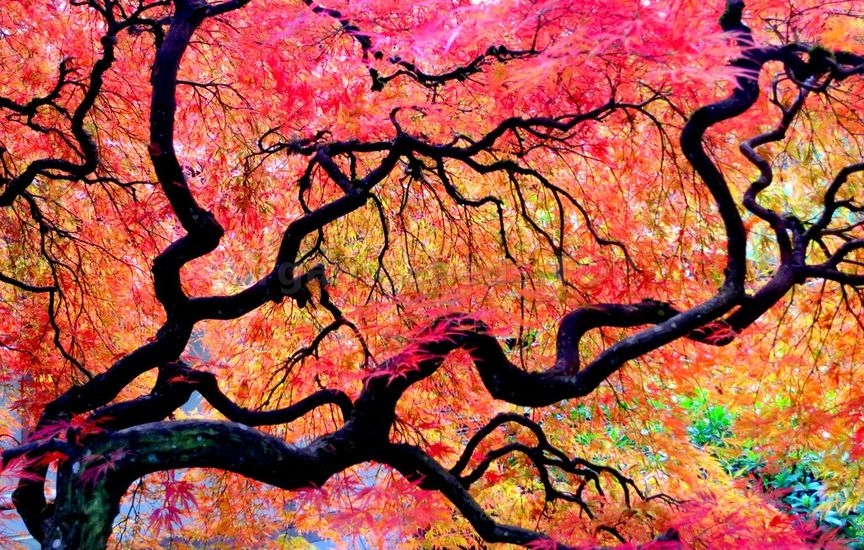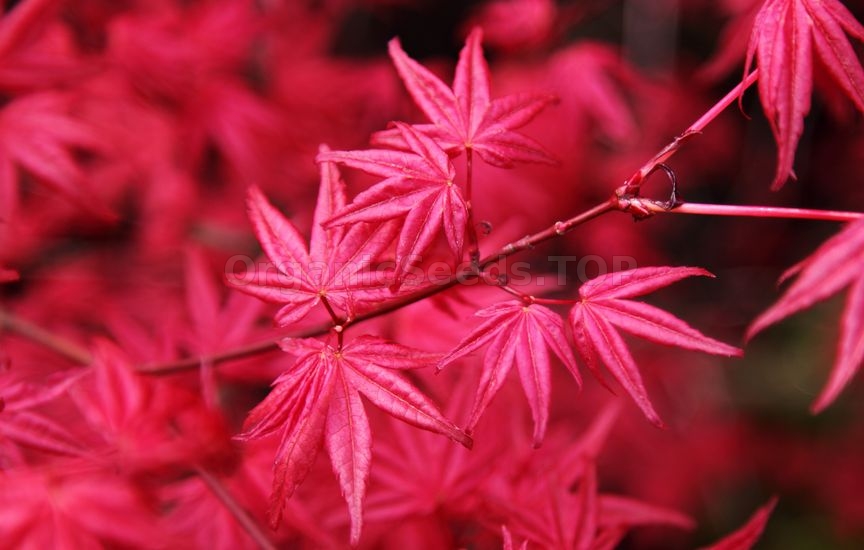Japanese Maple Tree |
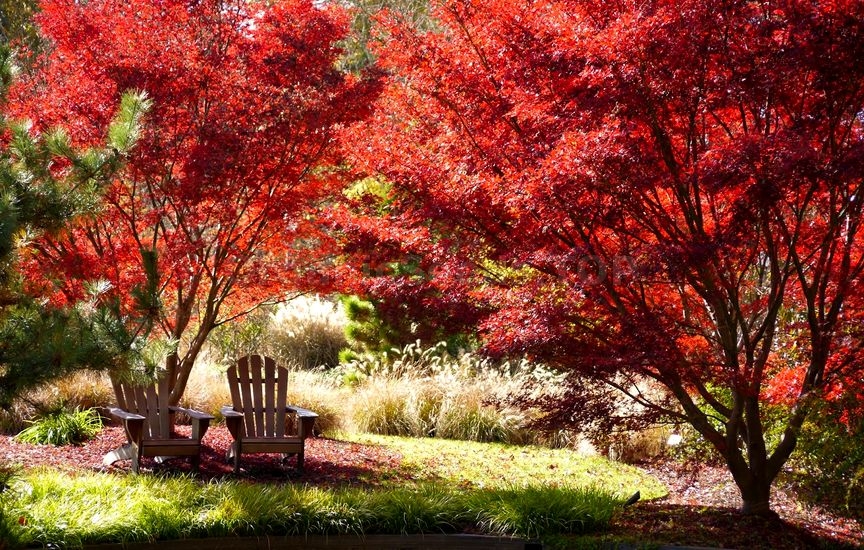 The Japanese maple is an integral part of traditional Japanese garden design. Even among amateur gardeners, the Japanese maple is extremely popular. In addition to green varieties, used at pond sides, or as background or solitary plants, there are other impressive colour combinations. The splendid autumn colours of the filigree leaves, displaying different shades of red, and the coral red bark of some varieties show the unique ornamental value of this plant. Plant Profile:
Acer palmatum is a spectacular exotic plant and an attractive enrichment for small or large gardens. In the German market gardens, it is often also offered as ‘Schlitzahorn’, which is also Acer palmatum. The growth of the Japanese maple is usually shrubby, although it can also be cultivated as a tree. Its heights vary between 100 and 500 cm. The decorative, up to 20 cm long leaves are lobed or slit in different intensities. Between May and June, the unspectacular flowers appear. Care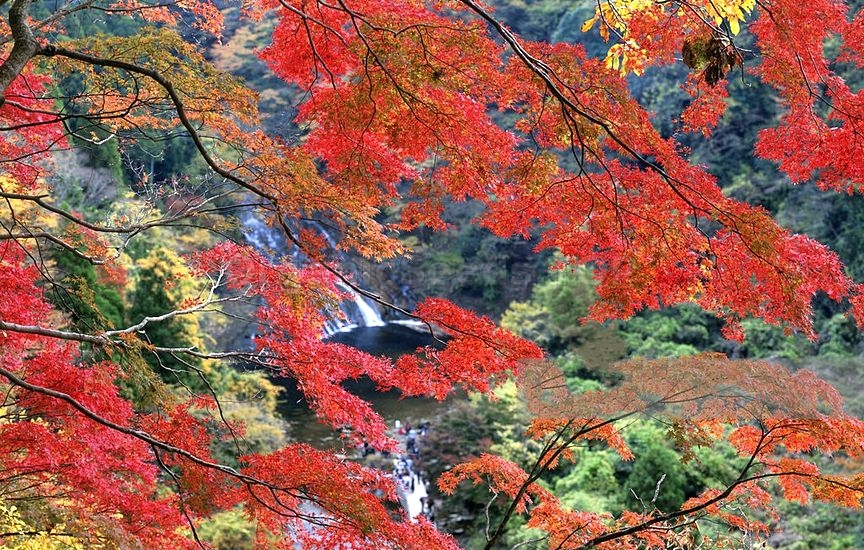 Not much effort is required to make sure that the Japanese maple keeps its beauty and above all its spectacular autumn colouring. Nevertheless, it is somewhat selective in terms of location and fertilization.
Location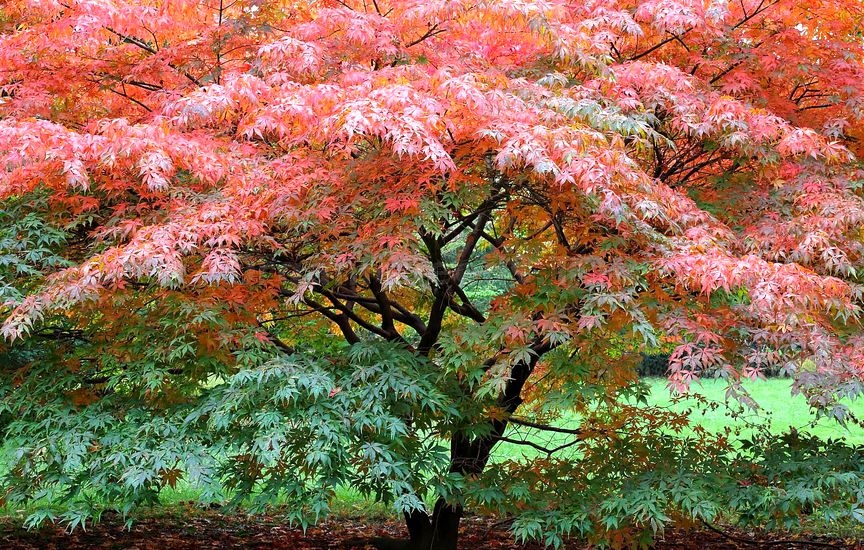 In addition to the variety, the location has a decisive influence on the intensity of leaf colouring. In contrast to sun-sensitive species like Acer shirasawanum, the Acer palmatum prefers sunny and very light half-shaded as well as wind- and rain-protected spots. In such places it will unfold its splendor. However, the bright midday sun should be avoided at all times. A place close to water, as beneath a pond, is recommended, because the higher humidity will be very good for this plant. Never ever should you choose a location for the Japanese maple and maples in general, which was affected by the feared Verticillium wilt. Soil condition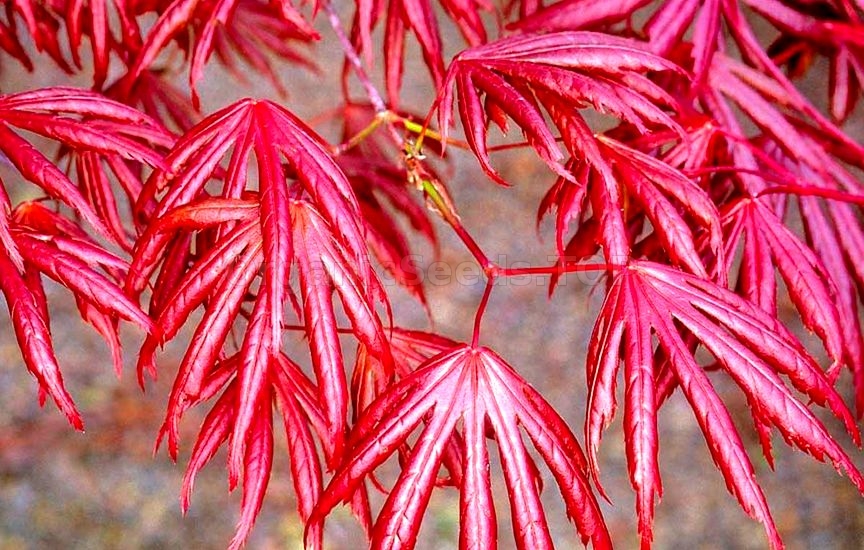 The natural location of the Japanese maple is in mountainous regions on rocky subsoils. Accordingly, loose, water-permeable and humus-rich soils should also be preferred in the domestic garden. They can be slightly acidic to neutral, with the pH being typically between 4.5 and 7. Pouring water and rainwater must be able to drain well and waterlogging must be avoided.
Consequently, compacted soils are completely unsuitable. In water-logged or compacted soils, oxygen deficiency may occur very quickly, leading to the dying of the fine fiber roots, which are indispensable for the survival of this decorative plant. A high-quality substrate for bucket plants, which is enriched with compost soil, is a good choice for cultivation in a bucket. Again, a permeable substrate and a corresponding drain are important for the plant to survive. To make sure the substrate remains permanently loose and permeable, you can add some clay granulate, expanded clay or the slightly more expensive German ‘Geohumus’. Planting in the garden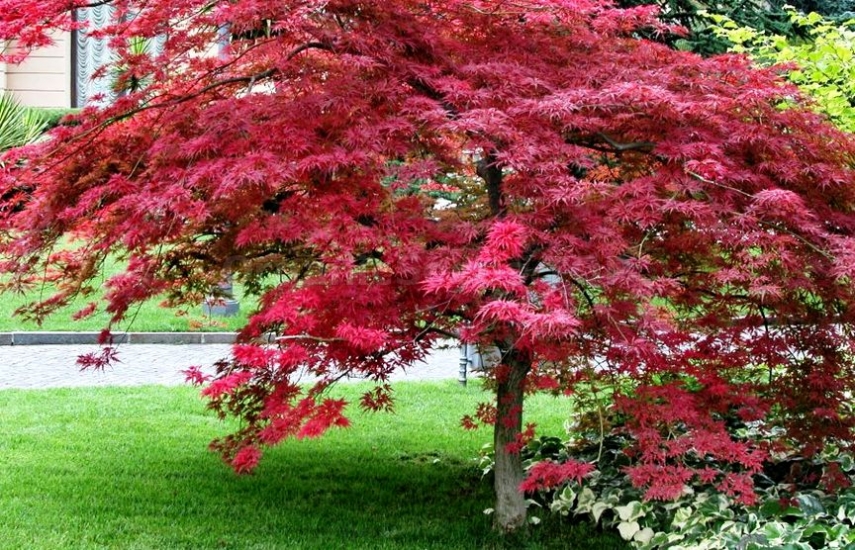 The best planting time is late spring, when the soil is already slightly warm. Thus, the Japanese maple can grow enough roots until the onset of the next winter and gain a foothold in the new location. Container plants can however be planted during the entire growth period.
Bucket planting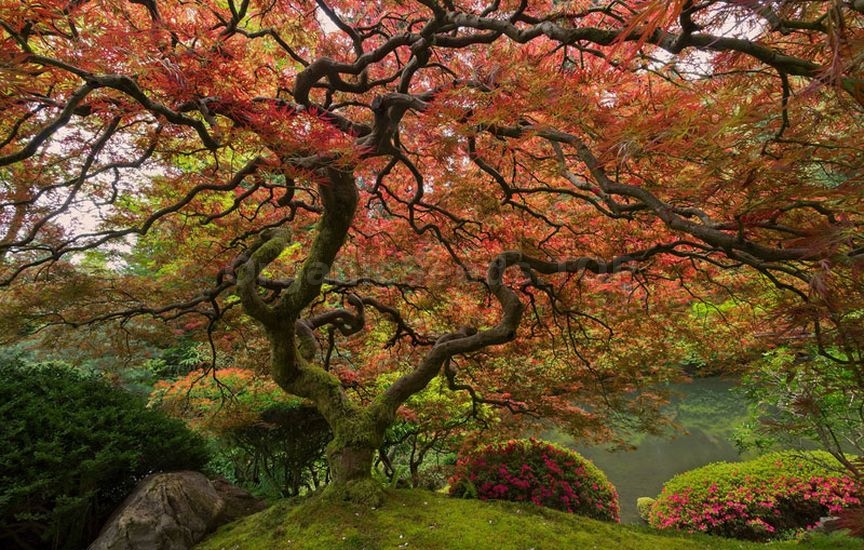 In general, almost all varieties of Acer palmatum can be cultivated in a bucket, as long as it is large enough. Dwarf varieties are particularly suitable for bucket cultivation. The bucket should have a diameter of about a sixth to a quarter of the final tree height. In addition, it is advisable to dispense with plastic vessels and prefer using clay pots.
Pots of plastic may heat up very quickly in the sun. Clay, on the other hand, ensures a certain cooling thanks to better evaporation. However, the substrate dries out more quickly here, so that the plant must be poured more frequently. The depth of the bucket should be at least one and a half times the size of the root ball. First, a layer of several centimeters of clay granules, expanded clay or coarse gravel should be filled into the bucket. On top of this, you must put some substrate. Now the plant is inserted in the middle and the pot is filled up with substrate to about 5 cm below the edge. Finally, press the soil and pour well. Watering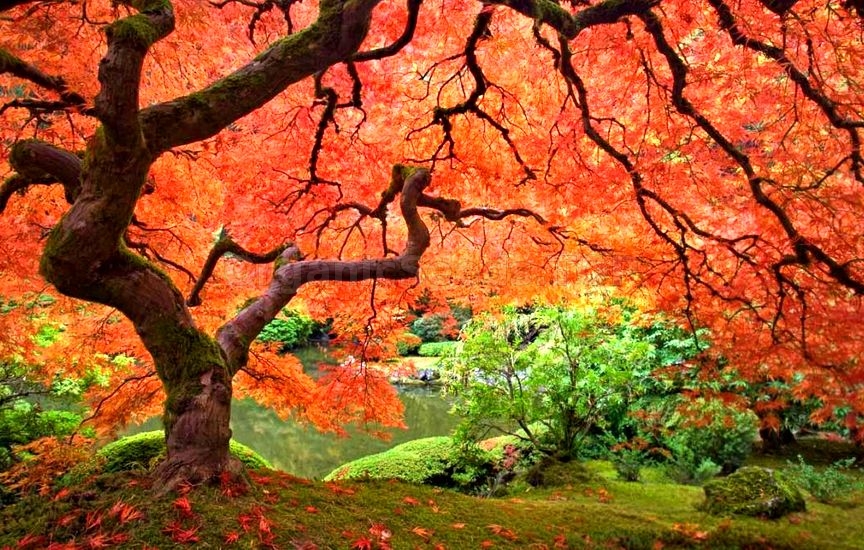 Although Japanese maples do not like waterlogging, particularly young and freshly planted specimens need a lot of water. One reason for this is that these shrubs are flat-rooted and therefore do not reach moisture from deeper soil layers. This means that they can not adequately supply themselves with the precious water, especially in summer.
Therefore you should pour them regularly and particularly in warm, dry weather you must supply them with plenty of water. Older specimens are only poured in the case of persistent drought, and they will most likely overcome a temporary water deficiency without problems. There is only a limited space available for pot plants; so the substrate dries much faster than in the garden. This makes both the watering and the supply of nutrients somewhat more difficult. Pour the bucket plant regularly. The water demand is the higher the larger the Japanese maple is. Cutting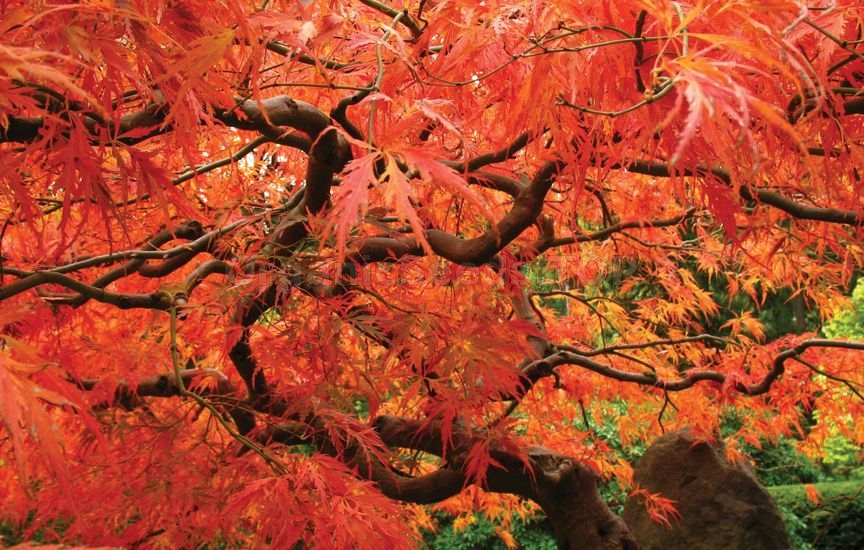 The Japanese maple generally doesn’t tolerate cutting measures very well. Small corrections such as the removal of damaged, dried up or dead shoots are usually without problems, but your actions must be moderate. Larger interventions, on the other hand, should only be carried out in exceptional cases. Before doing a cutback, you should remember that cut surfaces remain visible for a very long time on a Japanese maple, and branches that are removed directly from the trunk can only be replaced with difficulty or not at all.
If a cutting back is absolutely necessary, it should be done in late summer, because then the flow of juice is the least and the cuts can heal until autumn / winter. You should not cut into the old wood, but only into fresh wood, because only on fresh wood new shoots can develop. The best way is to cut just above a branch or about 2 cm above a bud. At the cut surfaces, the plant always dries out a little, which can also affect sleeping buds. Therefore you should not cut too tightly. Despite all this, the Japanese maple is most beautiful when it is not cutted and its characteristic form of growth is preserved. Multiplication
|
|
|

